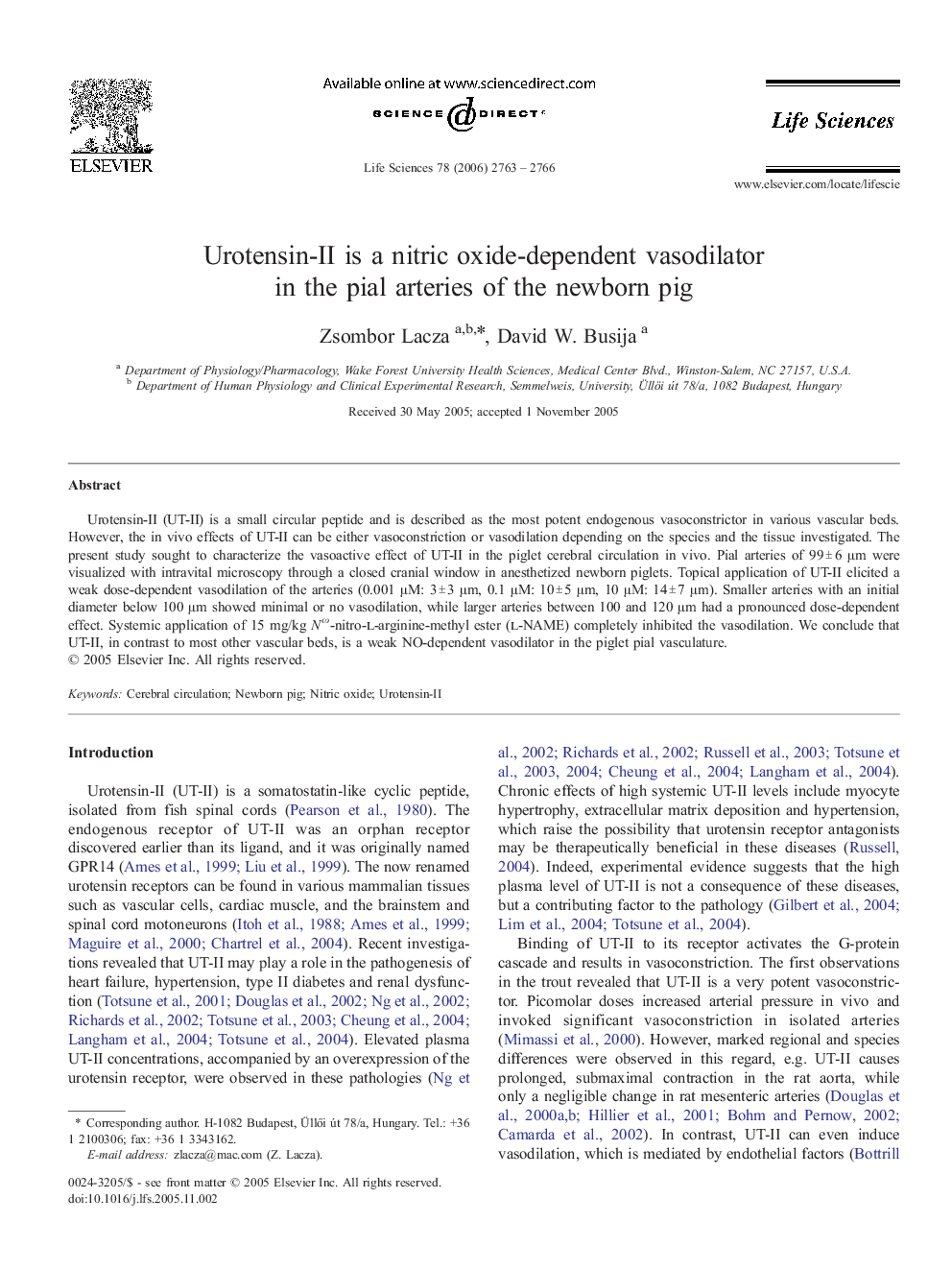| Article ID | Journal | Published Year | Pages | File Type |
|---|---|---|---|---|
| 2554239 | Life Sciences | 2006 | 4 Pages |
Urotensin-II (UT-II) is a small circular peptide and is described as the most potent endogenous vasoconstrictor in various vascular beds. However, the in vivo effects of UT-II can be either vasoconstriction or vasodilation depending on the species and the tissue investigated. The present study sought to characterize the vasoactive effect of UT-II in the piglet cerebral circulation in vivo. Pial arteries of 99 ± 6 μm were visualized with intravital microscopy through a closed cranial window in anesthetized newborn piglets. Topical application of UT-II elicited a weak dose-dependent vasodilation of the arteries (0.001 μM: 3 ± 3 μm, 0.1 μM: 10 ± 5 μm, 10 μM: 14 ± 7 μm). Smaller arteries with an initial diameter below 100 μm showed minimal or no vasodilation, while larger arteries between 100 and 120 μm had a pronounced dose-dependent effect. Systemic application of 15 mg/kg Nω-nitro-l-arginine-methyl ester (l-NAME) completely inhibited the vasodilation. We conclude that UT-II, in contrast to most other vascular beds, is a weak NO-dependent vasodilator in the piglet pial vasculature.
